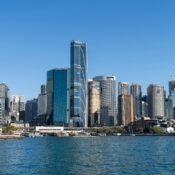
Australia: Culture, Traditions & Identity
Culture & Heritage
Australia is a diverse and vibrant nation, known for its laid-back lifestyle, beautiful landscapes, and rich cultural heritage. The country’s history spans from the Indigenous cultures that have existed for tens of thousands of years to its European colonization in the 18th century, and its modern development as a multicultural society. Australia’s culture is an eclectic blend of Indigenous traditions, British colonial influences, and a melting pot of international influences brought by immigrants from all over the world.
Arts & Literature
Australia has a thriving arts scene, encompassing everything from traditional Aboriginal art to contemporary visual arts, music, and theater. Indigenous art is one of the most distinctive cultural expressions, with dot painting, bark painting, and rock art dating back thousands of years, conveying stories and spiritual beliefs.
In literature, Australia boasts some of the world’s most notable authors, such as Patrick White (a Nobel Prize in Literature winner), Tim Winton, and Kate Grenville. Australian literature often explores themes of identity, the harshness of the Australian landscape, and the interaction between the indigenous and settler populations.
Australia also has a rich history in performing arts, with the Australian Ballet and Sydney Theatre Company being internationally renowned.
Music & Dance
Australian music is incredibly diverse, ranging from traditional Aboriginal music, which includes the didgeridoo and clapsticks, to modern genres like rock, pop, and electronic dance music. AC/DC, INXS, Kylie Minogue, and Sia are some of the internationally recognized Australian musicians.
Opera and classical music are also important to Australian culture, with the Sydney Opera House being a world-famous venue. Additionally, indigenous dance plays an important role in cultural ceremonies, while bush dancing and folk music are part of Australia’s country and outback culture.
Cultural Symbols
- The Southern Cross constellation is one of Australia’s most recognizable symbols, appearing on the Australian flag and representing the country’s location in the Southern Hemisphere.
- The Sydney Opera House is a global symbol of Australian creativity and is a UNESCO World Heritage site.
- The kangaroo and koala are iconic animals often associated with Australia’s wildlife and natural beauty.
- The boomerang is a traditional tool used by Indigenous Australians, now considered a symbol of Australian culture worldwide.
Traditions & Daily Life
Australia is known for its relaxed and outdoor-focused lifestyle. The country’s warm climate, stunning beaches, and love for sports all contribute to a lifestyle that is centered around family, friendship, and community involvement.
Work & Lifestyle
Australia is a highly developed nation with a strong economy based on mining, agriculture, manufacturing, and a growing technology sector. Major cities such as Sydney, Melbourne, and Brisbane are economic hubs, known for their high standard of living, infrastructure, and cosmopolitan atmosphere.
A high value is placed on work-life balance, with many Australians spending their leisure time outdoors—whether it’s surfing at the beach, hiking through national parks, or attending a sports event. Sports like Australian Rules football (AFL), rugby, and cricket play a huge role in social life, with matches often serving as community events.
Celebrations & Holidays
- Australia Day (January 26th) – Celebrates the founding of modern Australia, though it is also marked by Indigenous protests over its impact on Aboriginal culture.
- ANZAC Day (April 25th) – Honors the Australian and New Zealand Army Corps who fought in World War I, marked by dawn services and military parades.
- Labour Day and Queen’s Birthday – National public holidays celebrating labor rights and the British monarchy.
- Christmas and Easter – Celebrated in typical Western fashion, but with a twist, often including beach barbecues, outdoor activities, and extended family gatherings.
- Melbourne Cup Day (the first Tuesday in November) – Known as “the race that stops the nation,” this day is marked by horse racing, fashion, and festivities.
Food Culture
Australian cuisine is diverse, influenced by the country’s colonial past and its multicultural population. Meat pies, fish and chips, and Vegemite are classic Australian comfort foods, but the country’s food culture has evolved significantly with contributions from Asian, Mediterranean, and Middle Eastern immigrants.
- Barbecues (BBQs) are a central part of Australian social life, with families and friends often gathering outdoors to cook meat and seafood over an open flame.
- Tim Tams – A popular chocolate biscuit treat loved by Australians.
- Lamingtons – Sponge cake dipped in chocolate and rolled in coconut, often served as a treat during celebrations.
- Pavlova – A meringue-based dessert, often served with fresh fruit, claimed by both Australia and New Zealand as their own.
- Meat pies and sausage rolls are common snacks, typically filled with minced meat and gravy.
- Fresh seafood, such as prawns, fish, and oysters, is a staple, especially along the coastal regions.
- Flat white coffee – A type of coffee drink that originated in Australia and is now popular worldwide.
Community & Social Life
Community and family life are important to Australians, with friendship and informality being key values. Social life often revolves around outdoor activities, such as beach outings, barbecues, and sports games. Australians are known for their friendly, easy-going demeanor, often welcoming newcomers with open arms.
Family gatherings are central to social life, especially around major holidays like Christmas and Easter. Australians are also known for their love of volunteerism, with many contributing to their local communities through charity work, environmental conservation, and support for the arts.
Language & Religion
Language
Australia’s official language is English, which is widely spoken throughout the country. However, due to the country’s diverse population, many languages are spoken, particularly in multicultural urban centers like Sydney and Melbourne.
- Indigenous languages were once spoken by over 250 distinct groups, though many have unfortunately declined or disappeared. Efforts are ongoing to revitalize and preserve these languages.
- Mandarin is one of the most common languages spoken after English, as a result of large Chinese communities, followed by languages like Italian, Greek, and Arabic.
Australia’s linguistic diversity is one of its greatest strengths, reflecting the cultural melting pot that has shaped the country’s identity.
Religion
Australia is predominantly secular, though Christianity is the most widely practiced religion. Major Christian denominations include Roman Catholicism, Anglicanism, and Protestantism. Many Australians also identify as having no religion, reflecting the country’s diverse and often secular society.
- Indigenous beliefs continue to play an important role in the cultural lives of Australia’s First Nations peoples, with a strong connection to the land, the Dreamtime, and ancestral spirits.
- Buddhism, Islam, Hinduism, and other religions are practiced by smaller communities, particularly in urban areas.
Religious holidays such as Christmas and Easter are widely celebrated, often with family gatherings and church services. ANZAC Day, while not religious, has a deep spiritual and emotional significance for many Australians, as it honors the sacrifice of soldiers and veterans.
All Categories
Recent Posts
Guyana: Culture, Traditions & Identity
Australia: Culture, Traditions & Identity
China: Culture, Traditions & Identity
+1 (804) 663 8383
connect@cultureecounters.org



